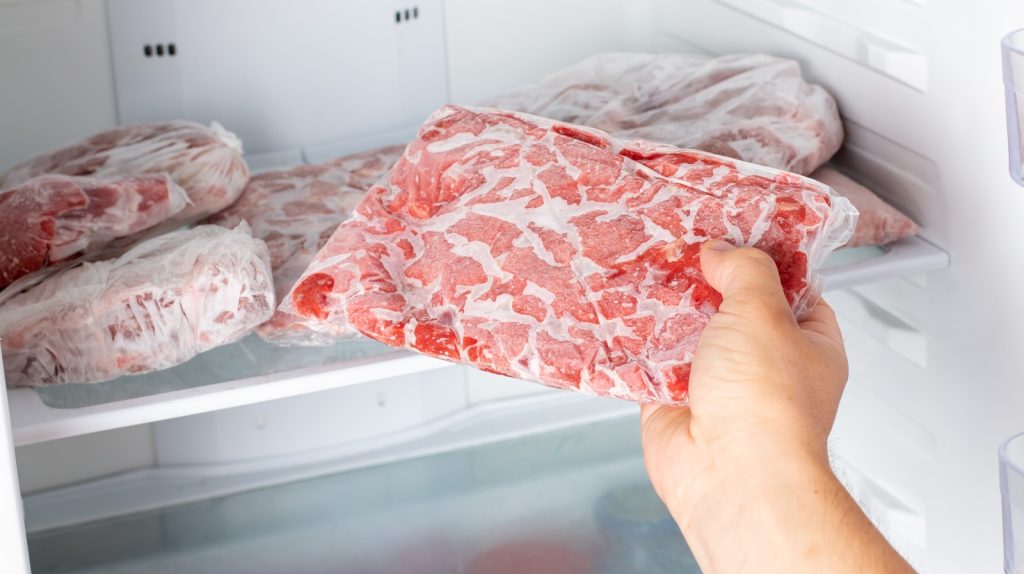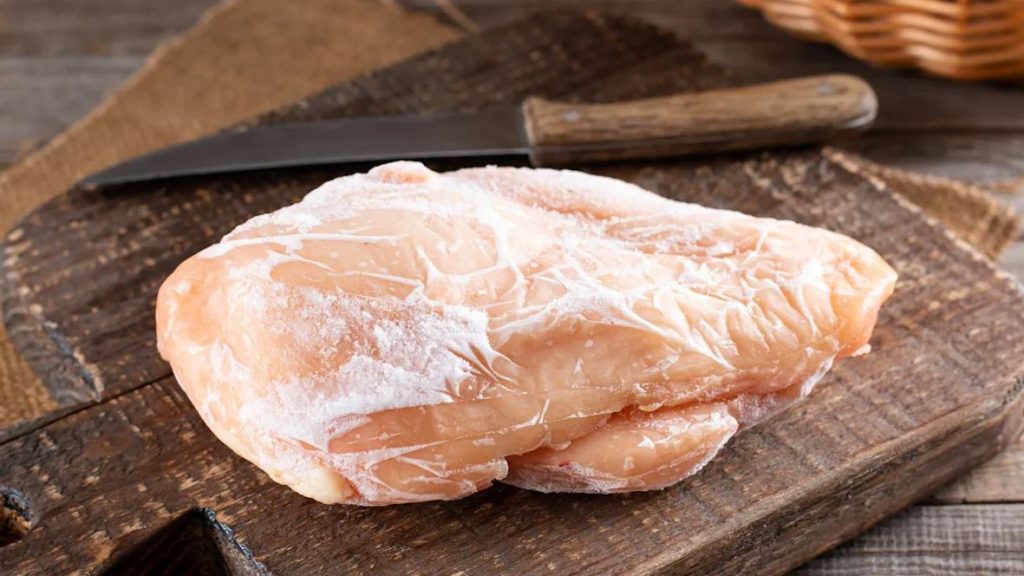Defrosting chicken might seem like a simple task, but doing it the wrong way can put your health at serious risk. Whether you’re prepping for a family dinner or a quick weekday meal, how you thaw your chicken matters more than you may think. Many people unknowingly make one major mistake that could lead to harmful bacterial growth and foodborne illness.
The Common but Dangerous Method: Defrosting on the Counter
One of the most widespread mistakes people make is defrosting chicken on the kitchen counter at room temperature. While this might seem convenient and quick, it’s actually a dangerous method. When chicken sits out at room temperature, the outer layers begin to warm up and enter what the USDA calls the “danger zone” (between 40°F and 140°F / 4°C–60°C)—a temperature range where bacteria such as Salmonella and Campylobacter can multiply rapidly. Even though the center of the chicken may still be frozen, the outer part could be teeming with bacteria by the time it’s fully thawed.

Why It’s a Serious Health Risk
Raw poultry is particularly vulnerable to bacterial contamination. Improper defrosting doesn’t just affect taste or texture—it can cause serious food poisoning if the bacteria are not completely destroyed during cooking. Unfortunately, if the bacteria have already multiplied during thawing, cooking may not always be enough to make the chicken safe to eat, especially if it’s undercooked in parts. According to the Centers for Disease Control and Prevention (CDC), about 1 million cases of foodborne illness each year in the U.S. are linked to poultry. Many of these are caused not just by undercooking, but by unsafe handling and defrosting methods.
The Safe Ways to Defrost Chicken
Luckily, there are safe and simple alternatives to defrost your chicken without compromising your health:
1. In the Refrigerator (Best Method)
Place the frozen chicken in a dish or sealed container and let it thaw in the refrigerator for 24 hours. This method keeps the meat at a consistent and safe temperature. It takes more time but is the safest approach.
2. Cold Water Method
Submerge the chicken (sealed in a leak-proof plastic bag) in a bowl of cold water, changing the water every 30 minutes. This speeds up the process and can thaw small pieces in 1–2 hours. However, it requires attention and should be cooked immediately afterward.
3. Microwave Defrosting
Most modern microwaves have a defrost setting. While fast, this method can begin cooking the chicken unevenly, so it should be used only when necessary—and followed immediately by cooking.
What You Should Never Do
- Don’t thaw chicken on the counter
- Don’t use hot water
- Don’t leave it in the sink overnight
- Don’t refreeze raw chicken once it has thawed at room temperature
- These practices not only increase the risk of foodborne illness but can also ruin the texture and quality of the meat.

Conclusion: Safety First in the Kitchen
Defrosting chicken the right way isn’t just about following kitchen etiquette—it’s about protecting yourself and your loved ones from dangerous bacteria. By avoiding the mistake of defrosting on the counter and using safe, approved methods instead, you ensure your meals are both delicious and safe. A little extra time and care in thawing your chicken can go a long way toward maintaining food safety in your home.

















